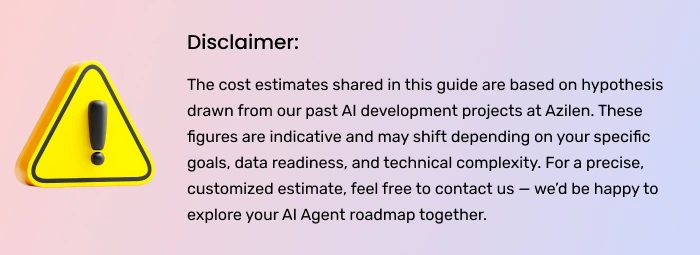You have a use case. You’ve seen what AI agents can do. Now you need clarity on what it takes to build one — and what it’s going to cost.
In this guide, you’ll get:
✔️ A breakdown of different types of AI agents — and what drives their cost
✔️ A clear look at where your investment really goes in development
✔️ Factors that influence cost across regions, complexity, and team models
✔️ A smarter way to scope AI agent projects without chasing flat price tags
Let’s break it down.







 13 mins
13 mins











 Talk to Our
Consultants
Talk to Our
Consultants Chat with
Our Experts
Chat with
Our Experts Write us
an Email
Write us
an Email





